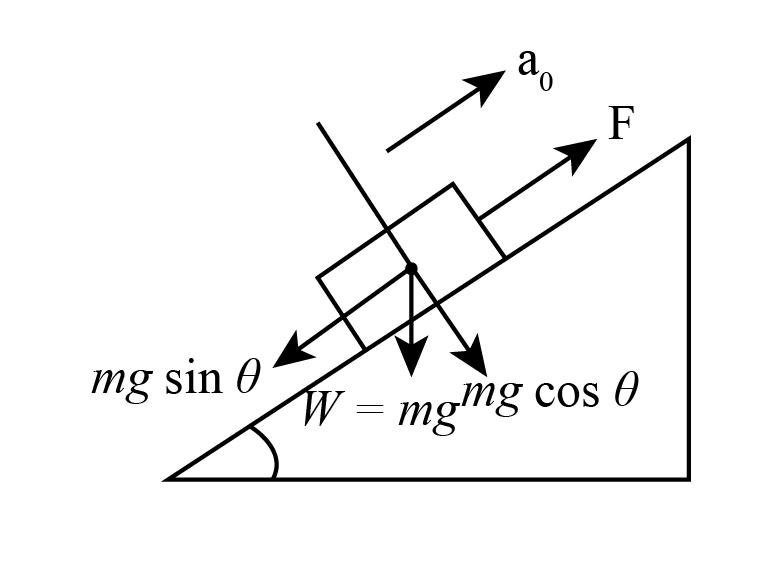Question
Question: A box of mass 1 kg starts to move up on a frictionless inclined plane of inclination 30° with an acc...
A box of mass 1 kg starts to move up on a frictionless inclined plane of inclination 30° with an acceleration a0 = 3 m/s² by applying a constant force F along the inclined plane. When a block of mass m0 is put inside the box, the box slides down with the same acceleration a0. The value of m0 is
(A) 1kg
(B) 2kg
(C) 3kg
(D) 4kg
Solution
When an object moves on an inclined plane, then the object applies some force on the surface due to the weight of the object. The applied force has two components: the one works along the surface of the plane and the other works perpendicular to the plane.
Complete step-by-step solution:
The mass of the box is: m=1kg
The angle of the inclined plane is: θ=30∘
The acceleration of the object along the surface of the inclined plane is : a0=3m/ms2s2
The schematic diagram of the system is given as follows,

Here we can see that there is a component of the weight, that is working just opposite to the force F .
- Now we balance the force along the surface of inclined plane,
⇒F−mgsinθ=ma0 ⇒F=mgsinθ+ma0.............(1)
- Now we put the mass m0 in the box, and now the total mass of the box is :m+m0
- Now the component of the force along the surface of the inclined plane due to the weight of the box becomes (m+m0)gsinθ.
As the box slides down with the same acceleration a0 after the addition of mass m0, the component of the force along the surface of the inclined plane due to the weight of the box will be more than the force F.
- Now we will again balance the force along the surface of inclined plane,
(m+m0)gsinθ−F=(m+m0)a0..........(2)
- Substitute the value of F from equation(1) in the equation (2),
⇒(m+m0)gsinθ−(mgsinθ+ma0)=(m+m0)a0 ⇒m0gsinθ−ma0=ma0+m0a0 ⇒m0gsinθ−m0a0=2ma0
Solve further,
⇒m0=gsinθ−a02ma0
Taking The acceleration due to the gravity is:g=10m/ms2s2
- Substitute all the values in the above expression,
⇒m0=10×sin30∘−32×1×3
It is known that sin30∘=21 , so substitute the value of sin30∘,
⇒m0=10×21−32×1×3 ⇒m0=26 ⇒m0=3kg
Therefore, the value of m0 is 3kg, and
the correct answer is option (C).
Note:
In such a type of question, If the friction is present between the surface of the inclined plane and the object, then we will consider the friction force and this force will act opposite to the direction of the motion of the object.
